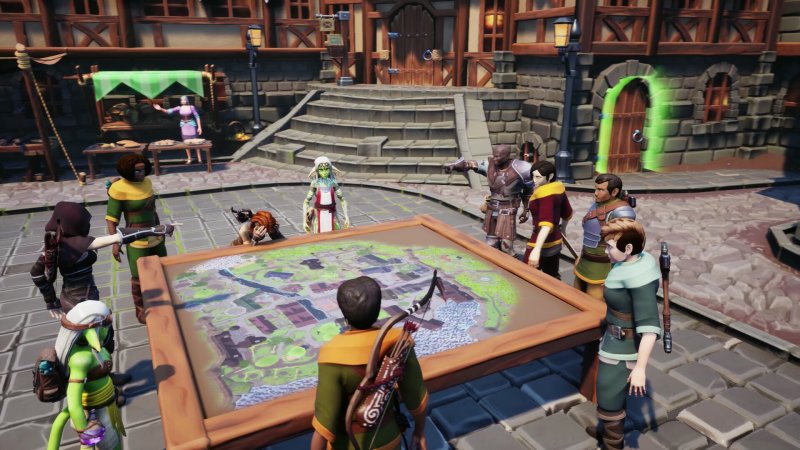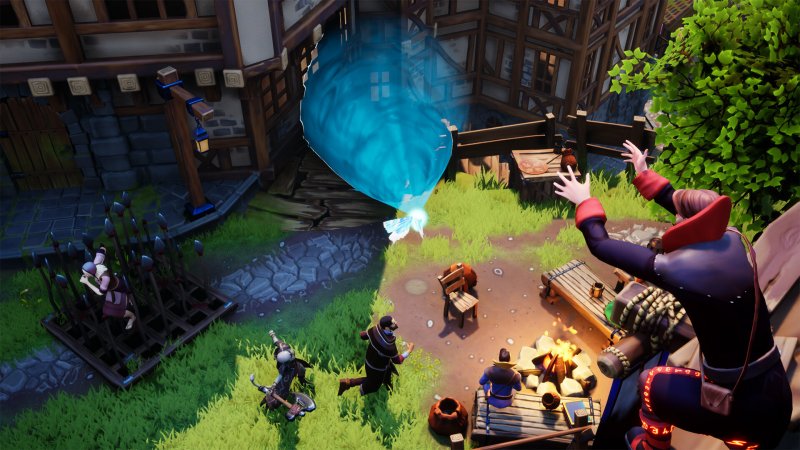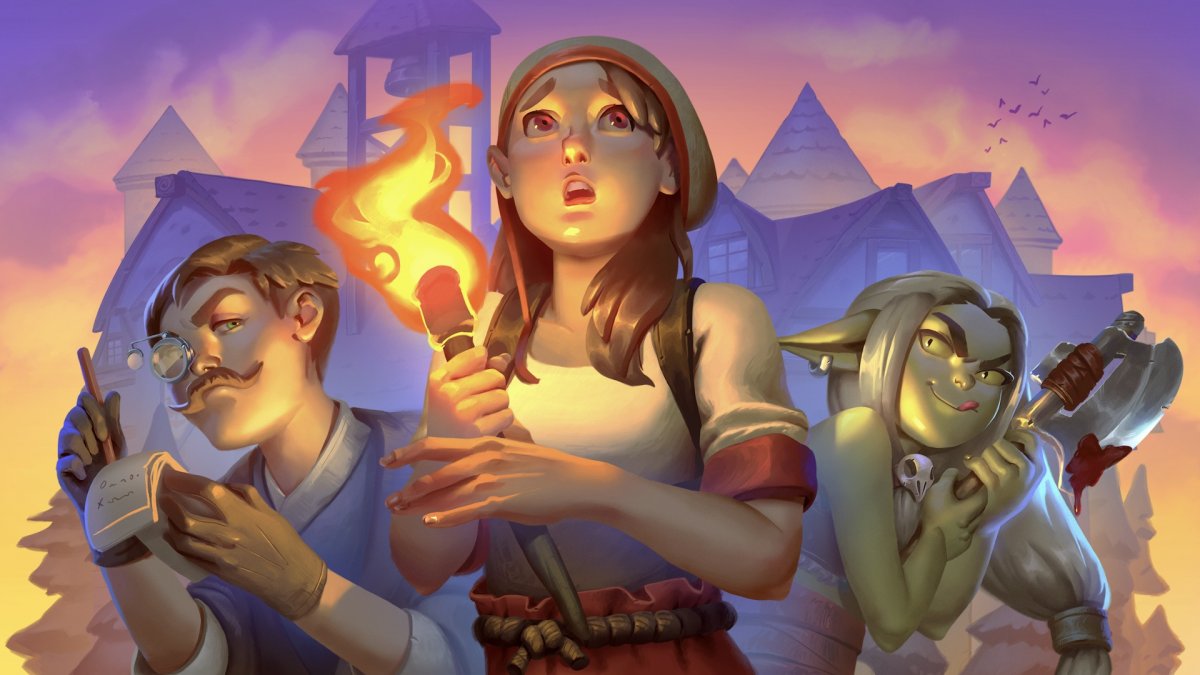Before the emergence of Among Us, games of “social deduction” (a term with little meaning in Italian) were mostly relegated to the field of board games. In video games, the landscape was suddenly filled with only the title Innersloth. However, there is room for some new reviews that won’t quite reach the popularity rating of “Amogus”, but those who want to try something a little different based on the same core theme will definitely have something to say. as we see in this Eville’s review.
Actually, the game VestGames Attempting to mediate somewhat between the complexity of some board games and the immediacy of Between Us, it succeeds only partially in such a difficult intent, but has the merit of suggesting something much more structured than the various clones of the Innersloth title.
The medieval setting is probably reminiscent of the ancestor of this genre, Lupus in Tabula, but the way the various features were combined into a unified whole is certainly original. The structure is much more complex than one might think when looking at the new trends of the “social deductive game”, but the key element is always interaction with other players, so even in this case, having something is essential. do it with a group of users who play the game correctly and encouragingly. The ideal is to always play with known people, because unfortunately the random formation of teams can cause you to have to deal with more or less toxic users, where it is difficult to build a satisfying game.
Crimes and misdemeanors in a quiet village

Be social deduction game, in this case is also an asymmetrical multiplayer where one group of players must be protected against the constant stealth attacks of another group of players in a struggle between “good” and “evil”. All this takes place in a private setting, really pleasant and perfectly functional for such a game: in Eville we find ourselves in a charming little medieval village with Bavarian or Alsatian architecture, in a climate reminiscent of the old Fable. Also in this case, while some players play normal residents, a smaller group act as “bad guys”: the goal of the latter is to sow panic and terror by killing the first, while others must try to make a living. It’s relatively quiet, making sure you place defenses to avoid attacks. Unlike Among Us, a game of Evil can be remarkably prolonged, with tasks and various activities that can be performed in light of missions and various activities, structuring itself through a tight day/night cycle that determines the possible activities of one group and the other. crimes committed by the sun and often at night.
Each villager has his own house and basically spends most of his time awake trying to build defenses at night to avoid being killed, while the bad guys plan their own evil by day to execute by the grace of darkness. This scanning between day and night it already requires a certain strategic approach, because it creates the fate of the macro changes in which the activities to be carried out will be organized, structuring the actions in other similar topics in a much deeper and more complex way. much more spontaneously and less logically.

For those who appreciate a slower and more rhythmic beat, but also interspersed with real missions that don’t really make much sense, this interpretation of the social interruption mechanic may be ideal, as long as you’re dealing with the right group of players. as interaction, cooperation and deception still remain the pillars on which the entire game depends.
Even the most typical moments of the genre remain with direct confrontation between the players: when a corpse is found, it is possible to attract everyone’s attention and initiate the usual. process He improvises on the potential culprit, initiating the usual whirlwind of accusations and lies to avoid the gallows. Also in this case, the faction that manages to eliminate opponents without being destroyed on the gallows wins.
Roles and specializations

In addition to the timing and complex setting, a strong distinguishing element of Eville is that every character you can be assigned has a character. has a role and certain characteristics. This gives the whole a further level of strategy and also offers continuous variations in the game, as each class can perform certain actions, behave in a certain way, and utilize their unique abilities to achieve their goals. Villagers are divided into 7 categories: citizen, trap expert, watchman, mayor, seer, psychic and detective; The villains specialize in four roles: barbarian, thief, smuggler and smuggler. This way each character has a unique role with skills that allow different interactions with other players and the surrounding environment.
It is an element of great importance as it changes it drastically. Gameplay far beyond the simple distinction between good and evil, depending on the role assigned to us. In an Eville game, especially during the night, we find a significant amount of activity to be performed between quests and rewards that allow us to obtain the tools necessary for our ends, which are essentially to kill or avoid being killed.

However, specializations bring a few basic variations to the game, in some cases taking advantage of a real crafting system, starting with resources conquered by quests and purchased from the country’s stores: for example, the specialist in traps can build various defense systems. systems to cage or slow down the enemies, the seer can set up barriers and security systems to see any intruders in the players’ homes, the barbarian can use his power to chase and kill quickly even during the day, psychics and detectives have the opportunity to gather additional information and find the criminals.
Each class has a role that fits perfectly with the game mechanics, even if it’s the group’s ability to play by the rules and with the right identity that ultimately matters, after all, the game of social inference is essentially a game. The role is built on a standard canvas that can be tiring in the long run.
A fairy tale with disturbing effects

While the technical realization of Eville has always followed modestly indie productions, it takes such games to a new dimension, hitherto limited to much more stylized and basic representations. It may seem like an additional element, but in this case the full 3D and finely modeled world still has an important purpose: the movement of the characters becomes more realistic, their presence is more physical, and the landscape plays an active role in the game. hiding game and research. In short, these are not simple aesthetics and marginal embellishments: the transition to a three-dimensional world has profound implications for playing such games and becomes necessary for the game as well. Whether this represents a true evolution in the standard action of One Among Us is another matter, and as far as we are concerned we have many doubts about it, but it is not clear whether the solution is clear. graphic It is designed to work with a specific game structure adopted.
It also doesn’t hurt that the aesthetic characterization is still pretty. The general atmosphere resembles a kind of parody. medieval fantasy and the first example that comes to mind is, of course, the aforementioned Fairy Tale, in appropriate proportions. Obviously this is not a particularly complex and rich system, on the contrary it looks rather crude and simple in many respects, especially with regard to the animations of the characters, especially woody and poorly integrated with the environment. There are also some technical drawbacks with tissue loading, which often happens late, keeping models and even 2D images at extremely low resolution for a few seconds before receiving the correct treatment.
A suspicious element in Eville’s overall organization is a sort of Battle Pass: the game is distributed premium, that is, it costs 14.99 euros with a purchase price that is not low by the standards of the genre, but this is just an “entry fee”. By playing, it is possible to unlock various bonuses by progressing through the Battle Pass, or you can get particularly rare items by purchasing them with microtransactions and activating the paid Pass. While this doesn’t seem to affect game balance through win-win practices, it’s definitely an addition we’d be happy to do without.
professional
- Well-tried gameplay, but enriched with various additional elements
- Character classes vary greatly in action
- Great general atmosphere
- A little clumsy and disorganized in various game actions
- The existence of a close-knit group of reliable players remains important.
- Various technical uncertainties
- Battle Pass and unpleasant microtransactions
Source: Multiplayer

